

Damion Smy
GWM Cannon Alpha ute, Tank 300 HEV and Tank 500 recalled
14 Hours Ago
The Kia Seltos Sport+ is the penultimate specification and features a full gamut of safety tech, though it misses out on desirable features.
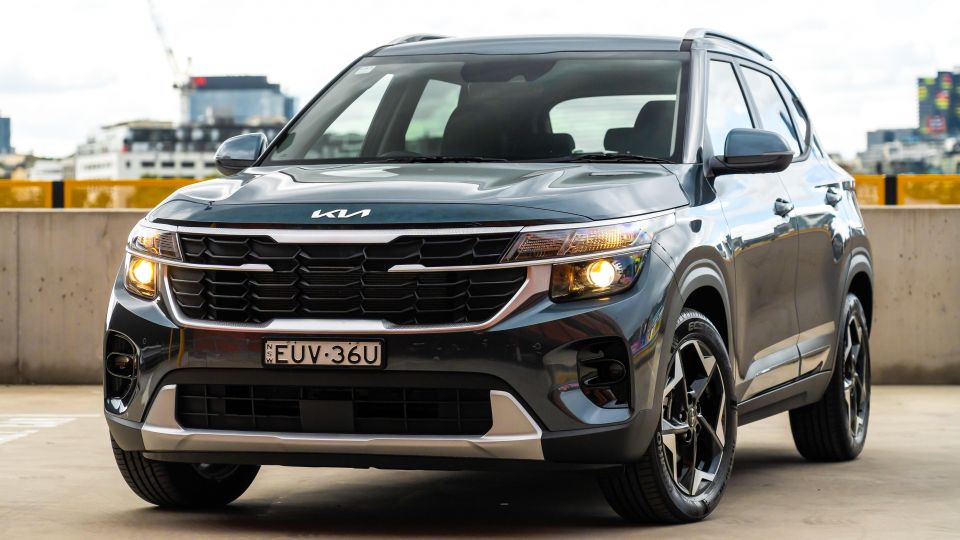
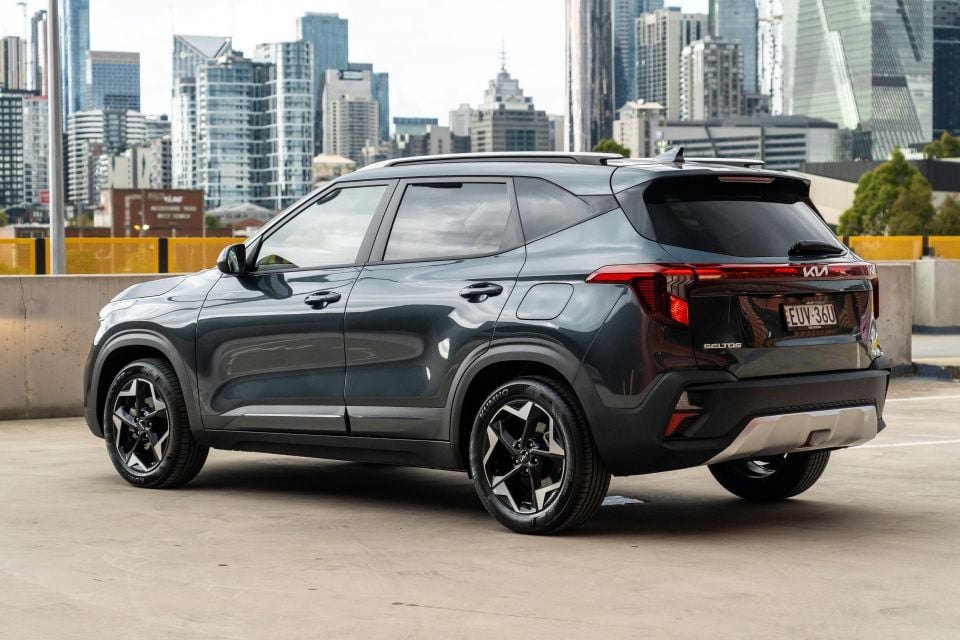

Quickly see how this car stacks up against its competition. Select any benchmark to see more details.
Where expert car reviews meet expert car buying – CarExpert gives you trusted advice, personalised service and real savings on your next new car.
The current-generation Kia Seltos crossover has been on sale locally since 2019 and received a facelift last year.
Forming as the high-riding counterpart to the Cerato sedan and hatchback, the Seltos is available in a wealth of variants that start at just under $30,000 before on-roads, and expand to over $45,000 before on-roads.
On test here is the almost top-specification 2024 Kia Seltos Sport+ with the standard 2.0-litre naturally aspirated four-cylinder petrol engine with a continuously variable transmission (CVT) and front-wheel drive.
For the 2024 model year Kia Australia upped the pricing of the entire Seltos range by $280 in terms of list pricing, and $300 for drive-away pricing due to “economic reasons” – though no specification changes were made.
Is the Kia Seltos Sport+ 2.0 FWD the pick of the range? Read along to find out.

Kia Seltos pricing:
All prices are drive-away
To see how the Seltos compares to its rivals, line it up with any of its rivals using our comparison tool.
Buy your new car without the stress. It's fast, simple and completely free.

Great service from Travis and team, second time I have used this business would not hesitate to recommend them to anyone
Craig C.
Purchased a Ford Ranger in Sunshine Coast, QLD
CarExpert helped Craig save thousands on his Ford Ranger, now let us save you on your next new car.
Find a dealThe Kia Seltos Sport+ is the most affordable variant in the range to introduce proximity entry and push-button start. It’s also receives remote start functionality which is a handy way to get the car’s heater or air-conditioner working before you hop in.

Walking up and hopping into the Seltos there’s an elevated driver’s seating position which is very sought after in this segment. It also allows for easy ingress and egress as you don’t need to step up or down.
The Seltos Sport+ comes with cloth and artificial leather upholstery as standard with an inoffensive geometric pattern in the middle sections.
The driver’s seat is comfortable enough, with the fabric middle sections allowing for proper ventilation. There’s nothing worse than getting into a car with hot leather seats and no way to cool them down quickly.
Ahead of the driver is a thin steering wheel that’s wrapped in what appears to be faux leather. This steering is called the “Premium Steering Wheel” according to Kia and it’s very soft to the touch.
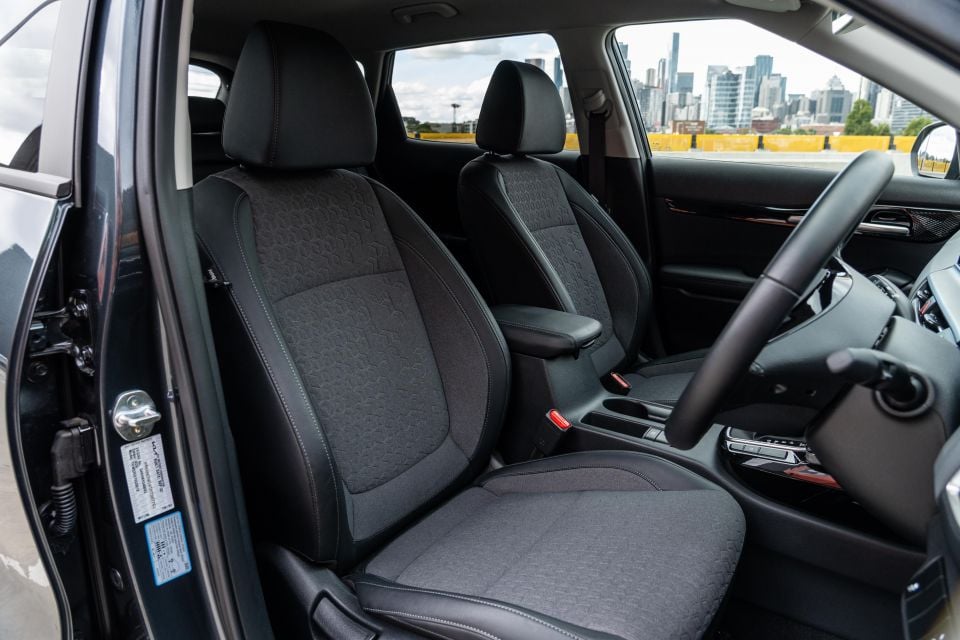
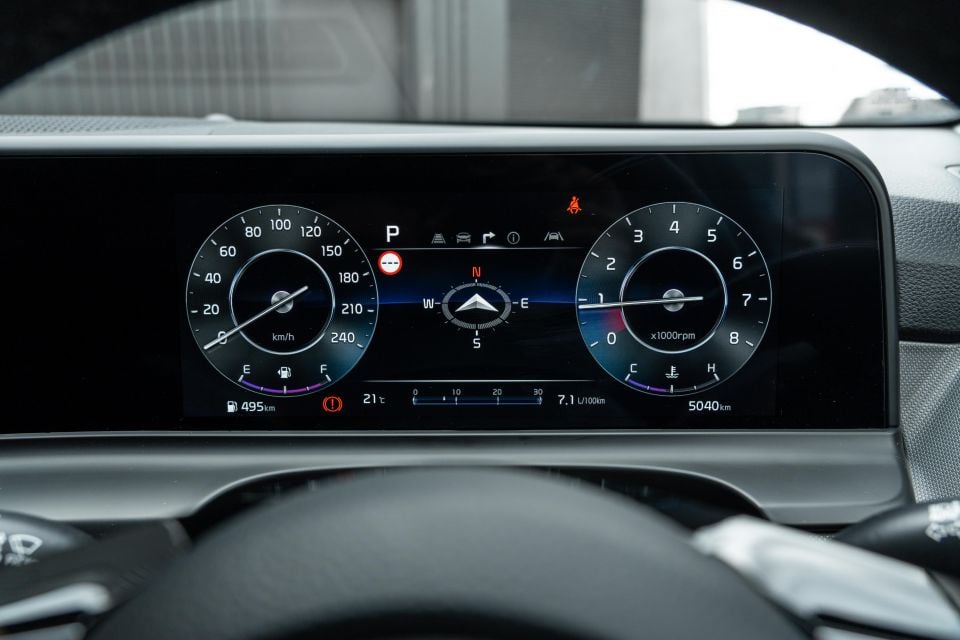
The buttons and switches on the steering wheel are logically laid out and have a tactile click or flick action which is satisfying whenever you interact with them.
Behind the steering wheel is a proper 10.25-inch digital instrument cluster which looks very high-resolution.
This kind of digital instrument cluster is common among a wide range of Hyundai and Kia vehicles so it feels very familiar and easy to use.
In the middle of the digital instrument cluster there’s a section that can display certain pieces of information like a digital speedometer, fuel economy, trip meter, adaptive cruise control settings, and a compass, among others.
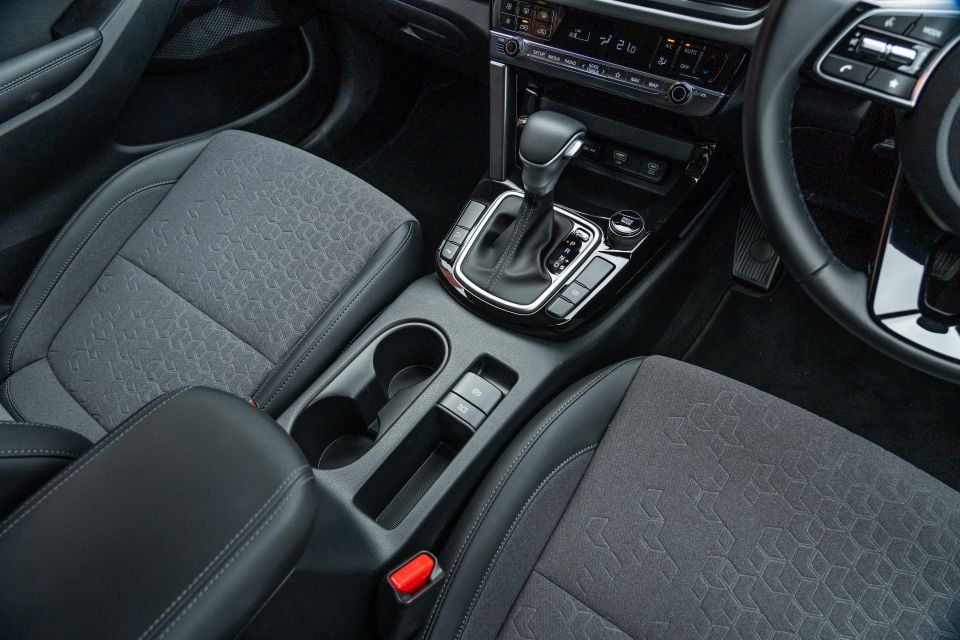
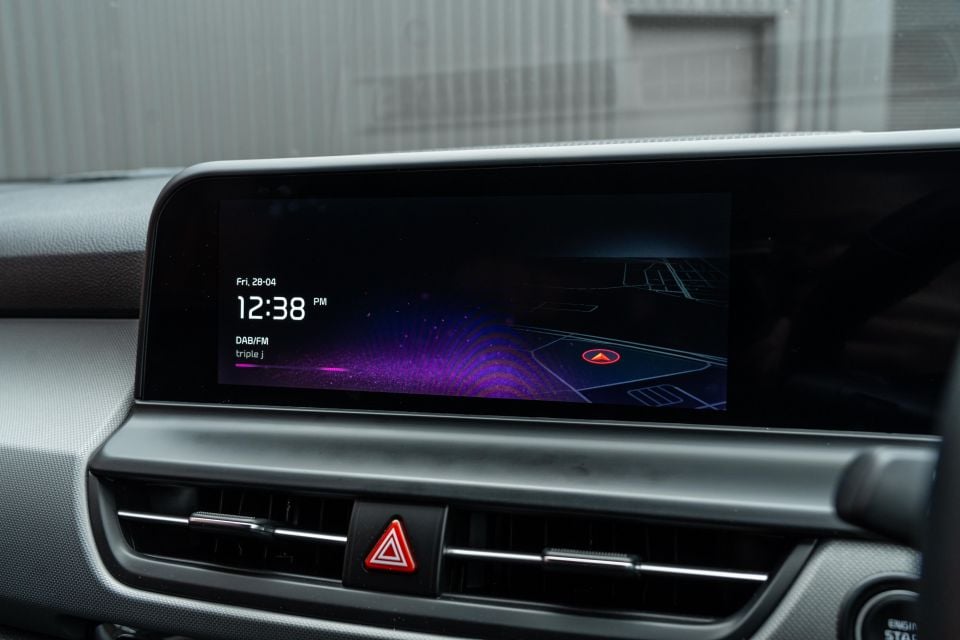
Moving across there’s a 10.25-inch touchscreen infotainment system which is in the same housing as the 10.25-inch digital instrument cluster. This is very on trend.
The touchscreen infotainment system, like the digital instrument cluster, offers incredibly high-resolution. It also seemed to have good processing power, which meant it turned on pretty much straight away upon startup and new pages loaded quickly.
Despite this the touchscreen was positioned a fair way from my driving position, which meant I had to stretch or lean forward in order to interact with it. This doesn’t happen very often as a person that’s 182cm tall.
The entire Kia Seltos range only comes with wired Apple CarPlay and Android Auto which is completed fine with me as they’re typically more reliable than wireless forms of both.
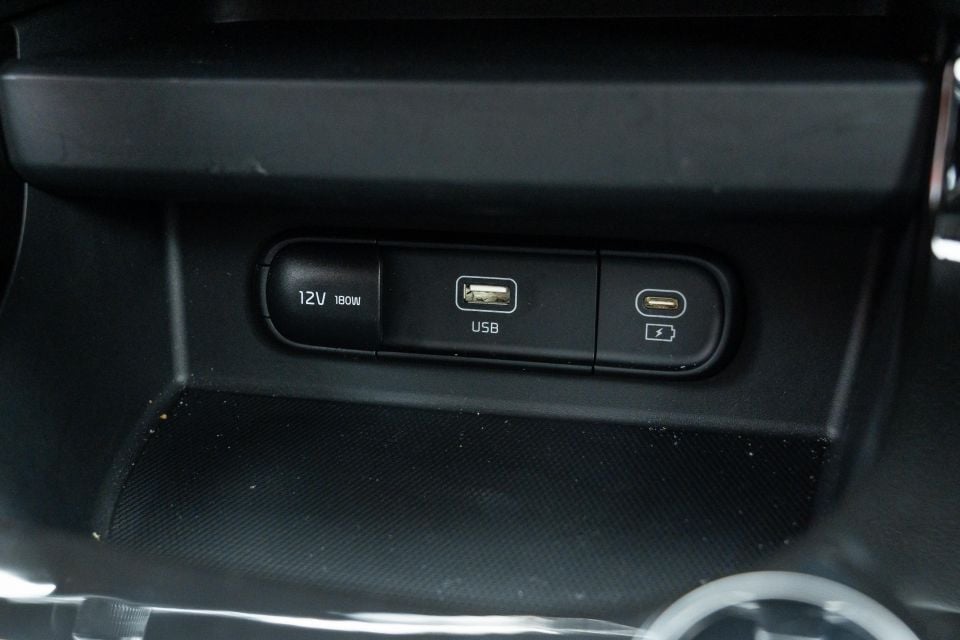
With my iPhone 12 Pro Max plugged in with a USB cable I experienced no Apple CarPlay dropouts whatsoever throughout my time with our Seltos Sport+ tester.
There’s no wireless phone charger in the Seltos Sport+ which may be a tad annoying because you’ll have to plug into one of the USB ports. You need to step up to the flagship GT-Line variant in order to receive this feature.
The 10.25-inch touchscreen infotainment system comes standard with satellite navigation which is really intuitive to use. It’s so easy to search up points of interest using the system.
Although the in-built satellite navigation is intuitive, I’d rarely use it as I always plug my phone in to use Google Maps or Waze with smartphone mirroring. I suppose it’s a good backup just in case you’re caught out without your phone.
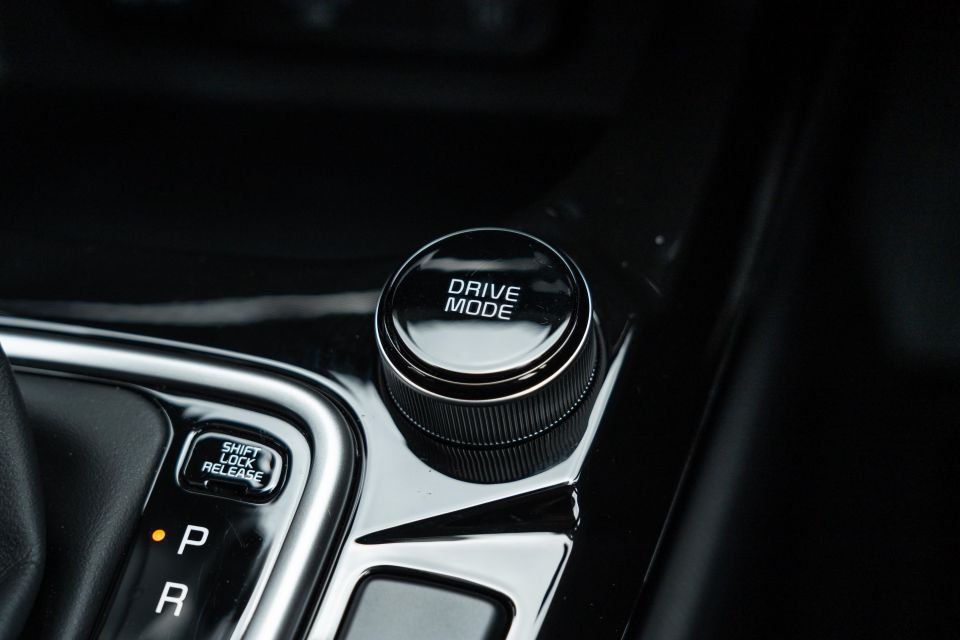
The Seltos Sport+ also comes with a seven-year complimentary subscription to Kia Connect online services. This includes features such as remote functions, emergency SOS calling, vehicle tracking, connected satellite navigation, and vehicle telematics.
The last interesting feature I’ll mention about the Seltos’ touchscreen infotainment system is its voice memo function. I don’t know how functional this feature is in practice but it’s a great novelty feature that sounds very handy in theory.
Looking around the cabin of the Seltos Sport+ there are a few soft-touch points on high-traffic areas, such as the armrests. It’s worth noting every Seltos variant under the Sport+ has rock-hard plastic door armrests.
There’s also a fair smattering of glossy piano black plastics on the upper speaker grilles and around the gear selector which gets grimy really quickly and can get scratched easily.
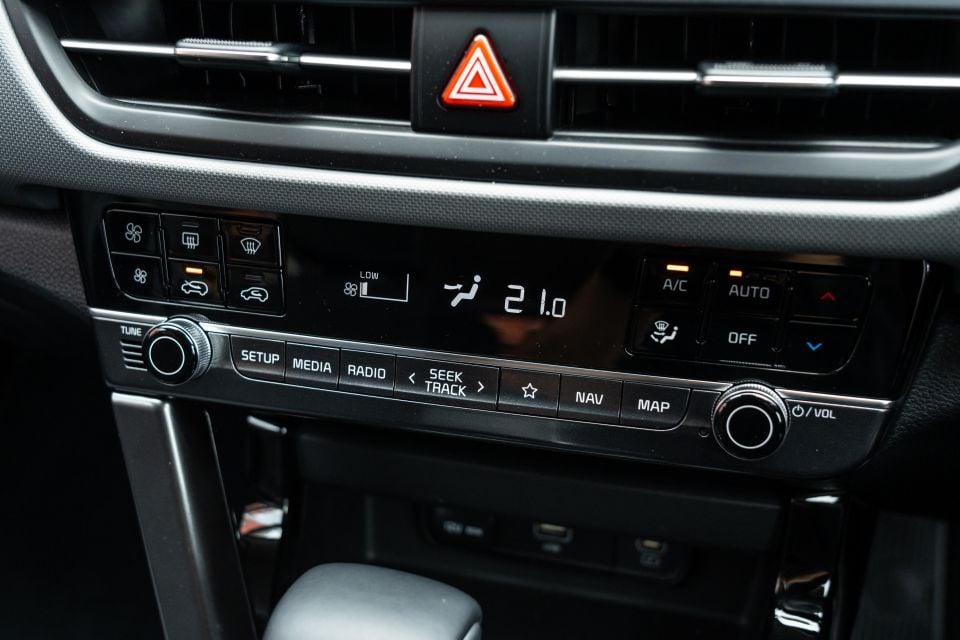
Another gripe I have is the centre and door armrests are mounted at different heights. This was extremely jarring at first but I slowly got used to sitting with one elbow higher than the other. I do wish they were level however.
The Seltos Sport+’s six-speaker sound system is completely adequate and not a standout in terms of sound quality, though like other Kia vehicles you need to have the volume cranked in order to actually hear the music.
Moving to the second row in the Kia Seltos there’s no real noticeable quality step down. There are soft-touch door armrests and the seat is still as squishy as the front, though the headrest is a tad harder.
At a leggy 182cm tall, I found there was a fine amount of space behind my driving position in the second row, though I did have to splay my legs on either side of the driver’s seat if I wanted to be more comfortable.
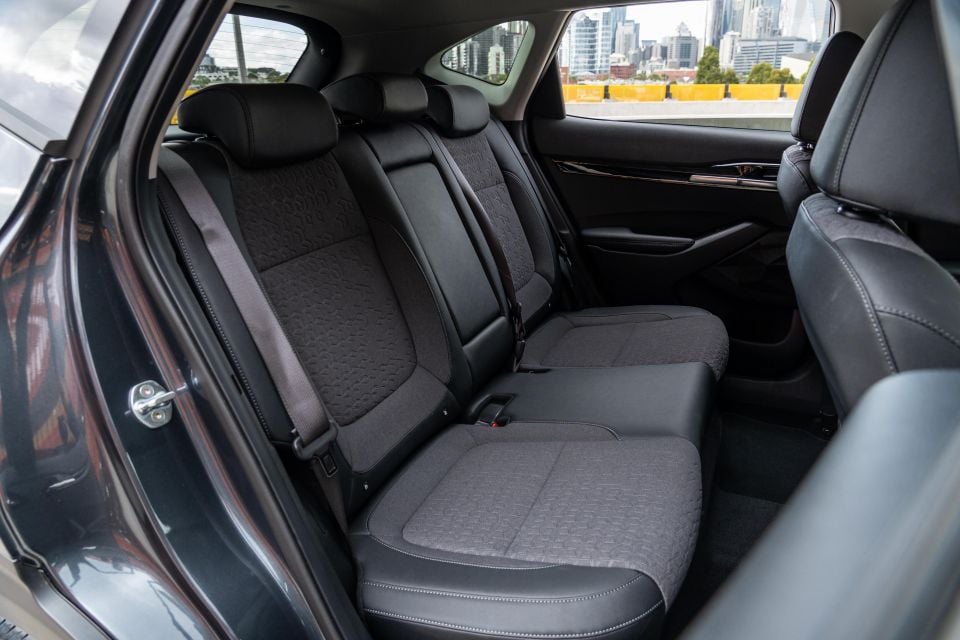
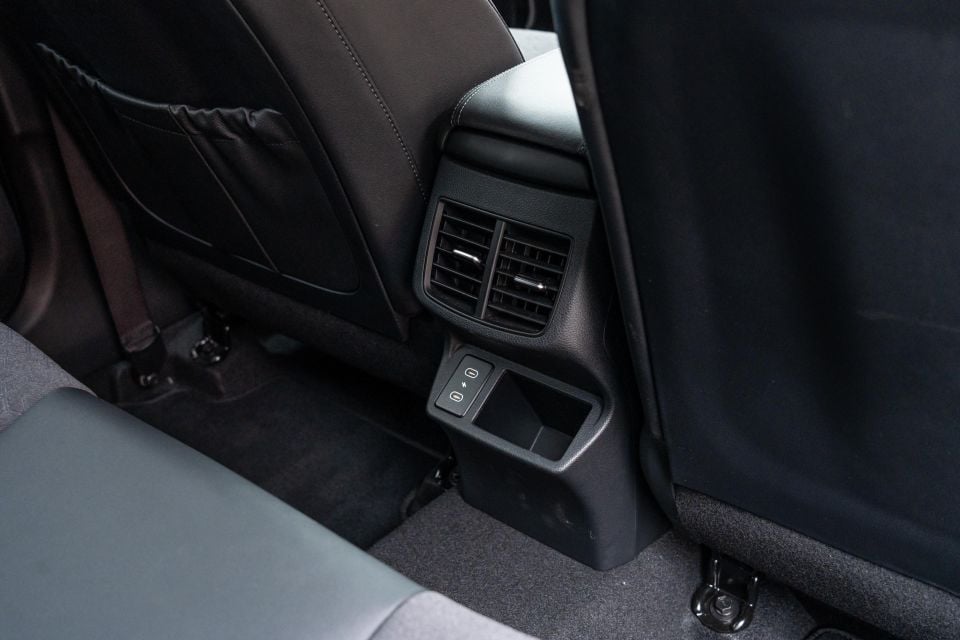
In terms of second-row amenities there are centre console-mounted air vents, USB-C ports, a small storage space, single map pocket on the front passenger seat backrest, as well as a fold-down armrest with cupholders.
Around the back the Seltos Sport+ comes with a manual tailgate that opens easily enough, though closing it takes two pushes. This could be a bit of an issue for people that have their hands full and need to be able to close the tailgate.
If you want a power tailgate you need to step up to the flagship GT-Line variant.
Once the tailgate is open it presents a boot space area with a claimed 433 litres of capacity. This is quite a usable and square space, though there’s no cargo blind which causes some privacy alarm bells to go off in my mind.
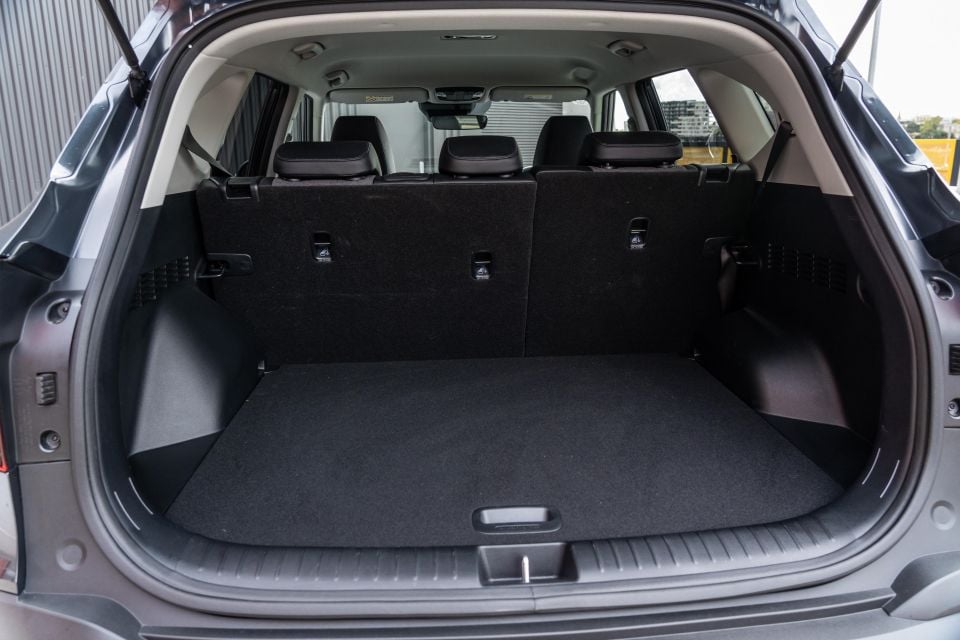
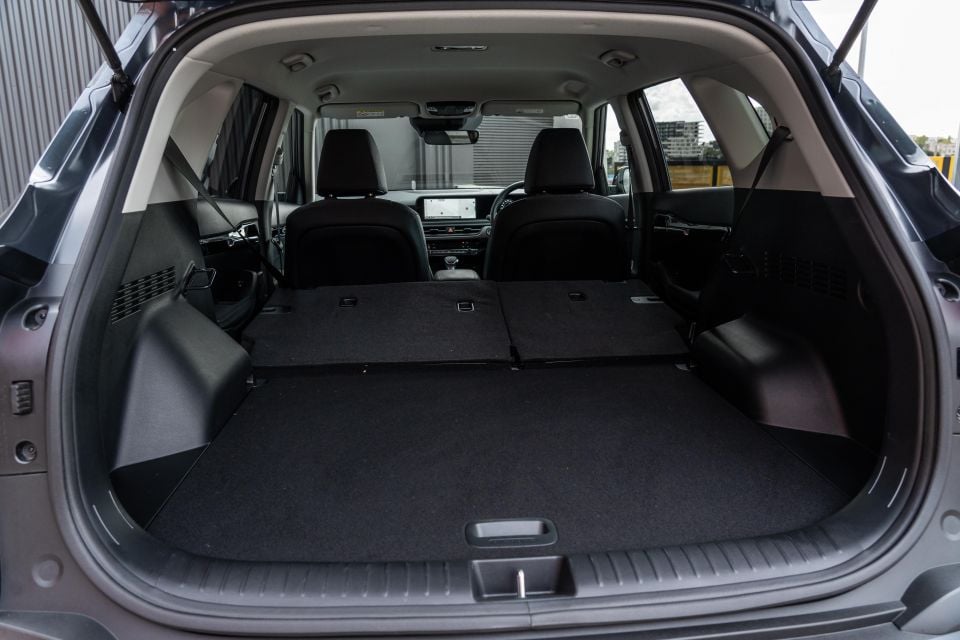
There are minimal amenities in the boot with it comprising a cargo hook in the boot and a light. There’s no 12V socket in the boot, nor netted areas.
The Seltos Sport+ comes standard with a full-size spare wheel that’s mounted under the boot floor. This is incredibly handy if you frequently do rural and regional driving away from

| Model | Kia Seltos 2.0 FWD |
|---|---|
| Engine | 2.0-litre 4cyl petrol |
| Power | 110kW |
| Torque | 180Nm |
| Transmission | Continuously variable transmission (CVT) |
| Driven Wheels | Front-wheel drive |
| Weight | 1375kg (tare) |
| Fuel economy (claimed) | 6.9 litres per 100km |
| Fuel economy (as tested) | 7.9 litres per 100km |
| Fuel tank | 50 litres |
| Minimum fuel requirement | 91 RON |
To see how the Seltos compares to its rivals, line it against any of its rivals using our comparison tool.
Starting up the Kia Seltos Sport+ there’s thankfully a button to press rather than a physical key to turn – you need to step all the way to this almost top-specification variant if you want this privilege.

When the engine initially fires up it can rev a bit harshly. Once the engine has warmed up a bit however, it does quieten down and become a lot more pleasant and refined.
Setting off you quickly realise you won’t really be winning any races from the traffic lights in the Seltos, especially with the regular 2.0-litre naturally aspirated four-cylinder petrol engine fitted to this car which only produces an adequate 110kW and 180Nm.
This engine is mated exclusively to a continuously variable transmission (CVT) which feels like it sucks a fair bit of life out of the car. It’s a little droney at points but allows you to get from point A to point B without too much stress.
Around town the Seltos cruises around effortlessly and quietly. The revs are kept down low for the most part, though if you punch it the revs will flare to get the car moving along at a brisker pace.
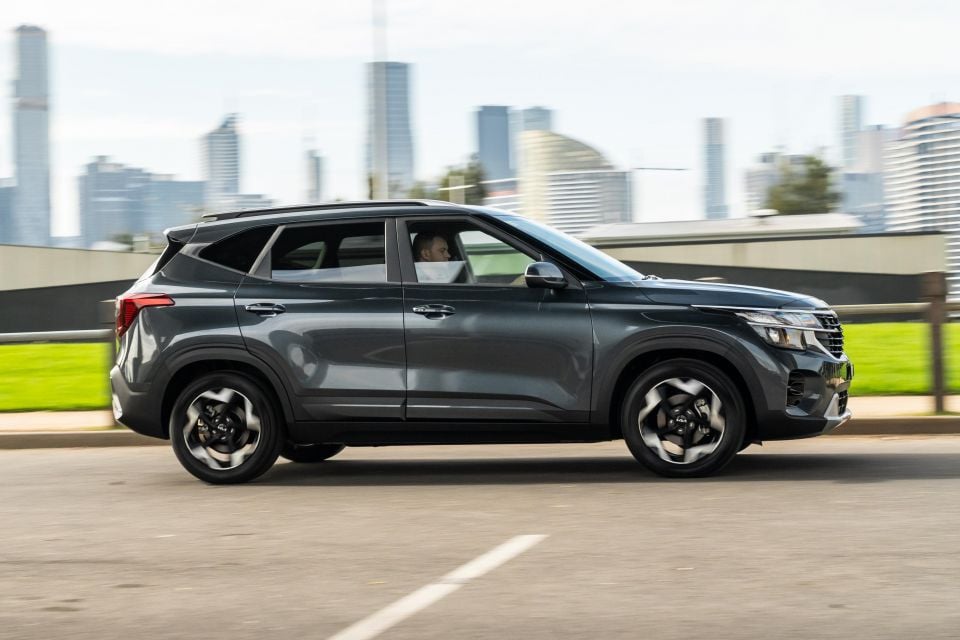
The Seltos has a very comfortable and compliant ride in urban surroundings which is surprising given the 2.0-litre FWD version only has a torsion beam rear suspension setup. The 1.6-litre AWD version receives a more sophisticated rear multi-link suspension setup.
In low-speed scenarios like in a carpark for example, the Seltos’ steering can be a little firm which makes twirling the steering wheel bit of a task at points. Thankfully the entire Seltos range comes standard with front and rear parking sensors as well as a reversing camera which has adequate resolution.
You’re unable to get a surround-view camera on any Seltos variant currently offered in Australia. You’ll need to opt for the larger Sportage GT-Line which currently starts from $49,720 before on-roads to get this feature.
Building up speed in the Seltos with the 2.0-litre FWD powertrain does take some work. The car also starts to feel like it’s out of puff when you’re doing closer to highway speeds.
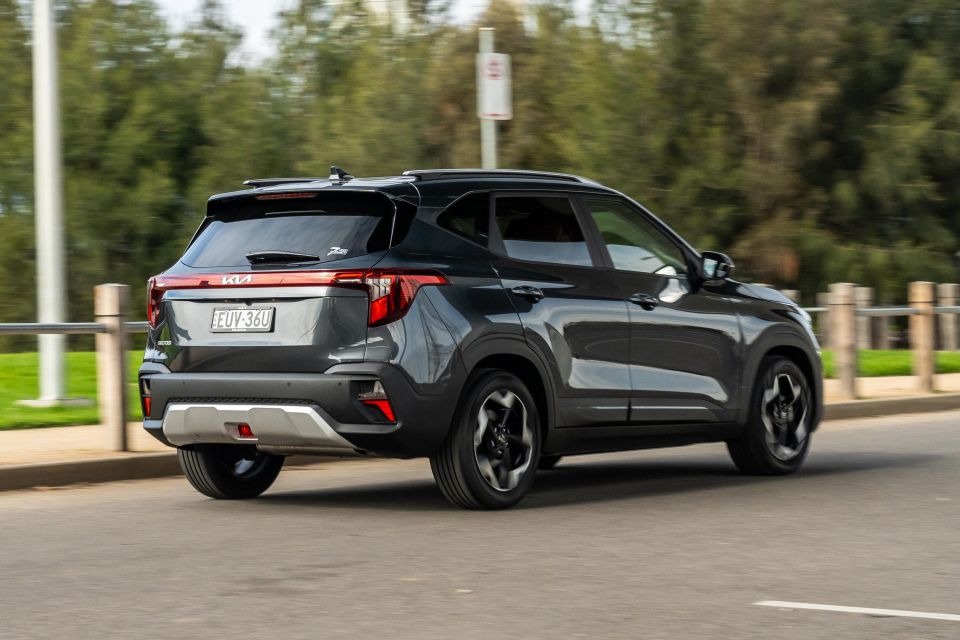
Where expert car reviews meet expert car buying – CarExpert gives you trusted advice, personalised service and real savings on your next new car.
Don’t be surprised if you see the revs sometimes flaring up to or beyond 3000rpm in order to maintain highway speeds. This is one of the times where having the CVT feels the most jarring.
You have to really consider and plan out your overtakes in the Seltos 2.0 FWD as if you’re not careful you could be caught out.
Like a number of CVT-equipped vehicles, the Seltos 2.0 FWD can be prone to carrying a bit of speed down hills as it lacks the inherent engine braking a torque converter-equipped car has. This means you’ll be pressing the brakes more often to keep within the speed limit.
Despite these gripes, the Seltos feels really planted out on the road at higher speeds. This complements how well the crossover fares in regard to pimply urban roads and speed bumps.
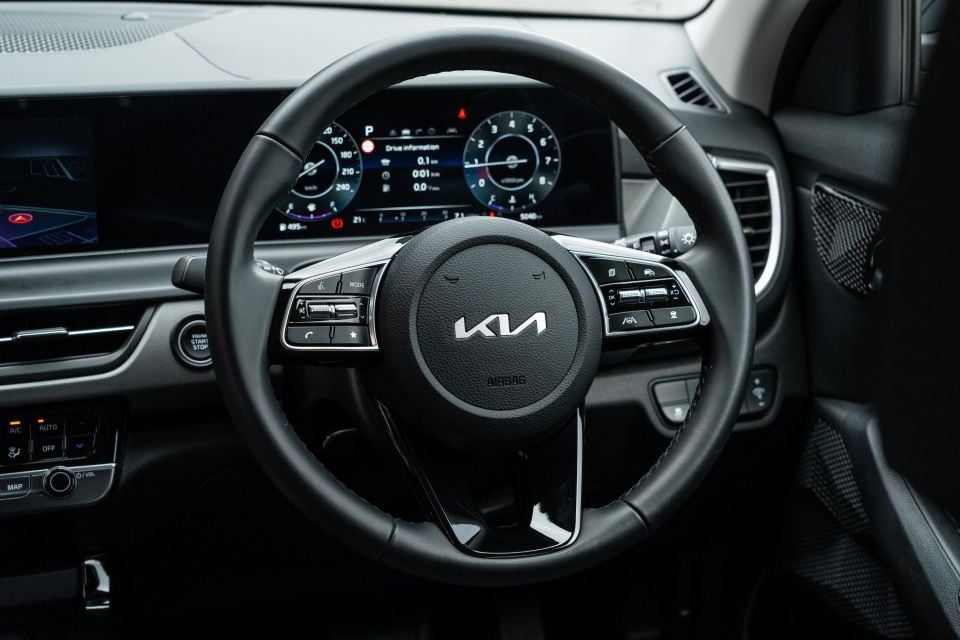
On the safety front, the current-generation Seltos, like a growing number of Kia and Hyundai vehicles, are coming standard with some incredibly annoying chimes.
One of the most of these chimes is for the Intelligent Speed Limit Assist system which reads speed limit signs and sounds annoyingly loud chimes when you surpass the speed limit for a certain period.
In theory this system should be really helpful to ensure people don’t speed, but at times the car detects an incorrect speed sign and sounds the chime. This is most notable when travelling through school zones when they aren’t active.
The lane-keep assist function works well for the most part, while its Lane Following Assist (lane centring) function can get confused easily. There were multiple points where I was sent in the wrong direction, especially on roads with faded lane markings.
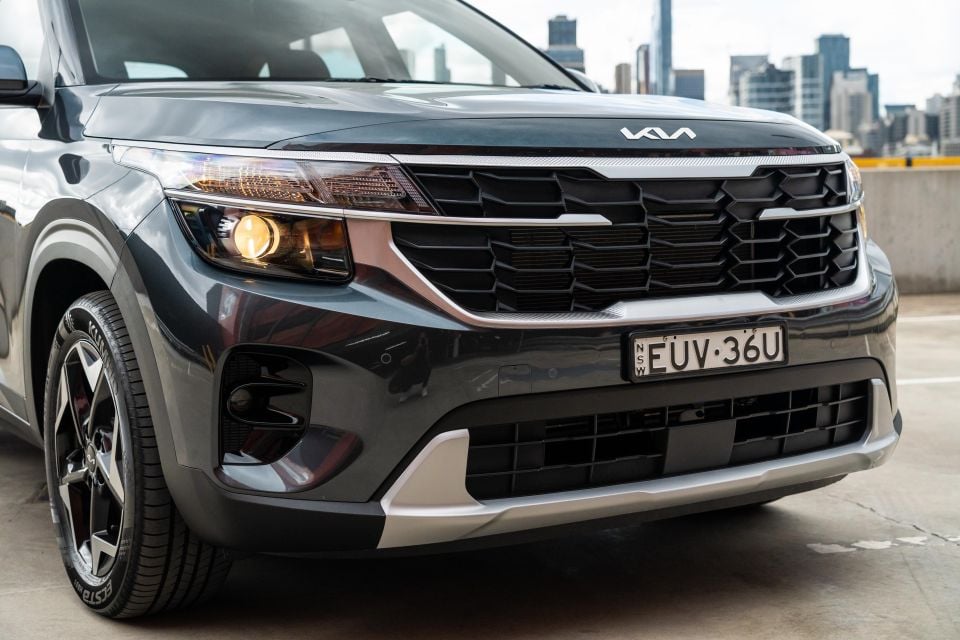
Like a Niro EV I previously drove, the Seltos’ adaptive cruise control system strangely has a lull before taking over the full acceleration of the car. This then in turn makes the car flare it revs to recuperate the lost 1-2km/h.
The last thing I’ll mention in this section is the Seltos Sport+, despite being almost top-specification, still only comes equipped with projector-type halogen headlights. This is wild to me given our tester will well over $35,000.
You need to step up to the flagship Seltos GT-Line to receive LED headlights as standard. Although your eyes do adjust to driving a car with yellower halogen lights on dimly lit roads, LED headlights really do provide considerably more peace of mind when travelling in rural and remote areas.


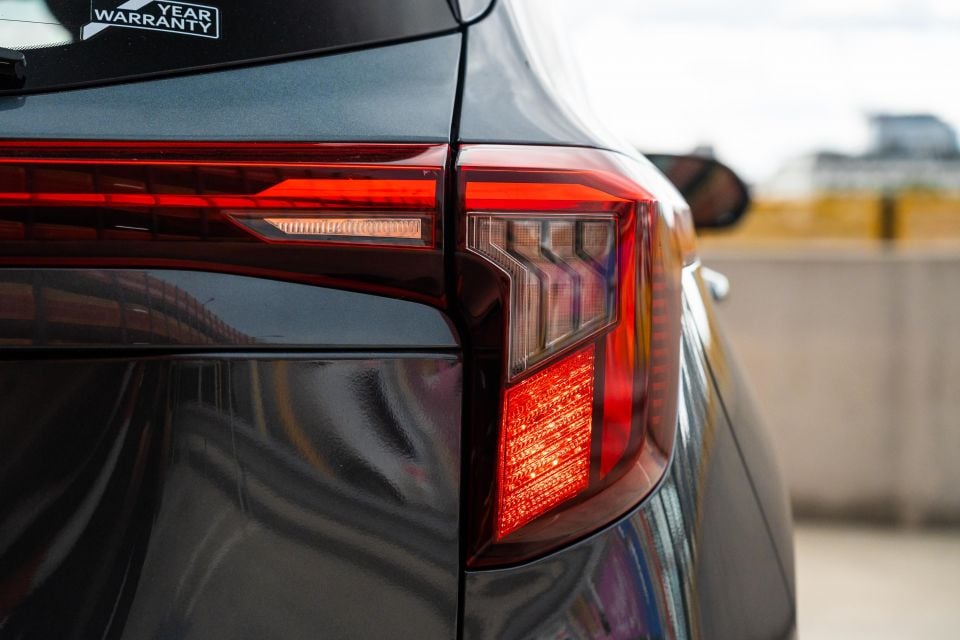

Kia Seltos S highlights:
Seltos Sport adds:


Seltos Sport+ adds:
Seltos GT-Line adds:
The Kia Seltos was crash tested by ANCAP in 2019 and it received a five-star safety rating.
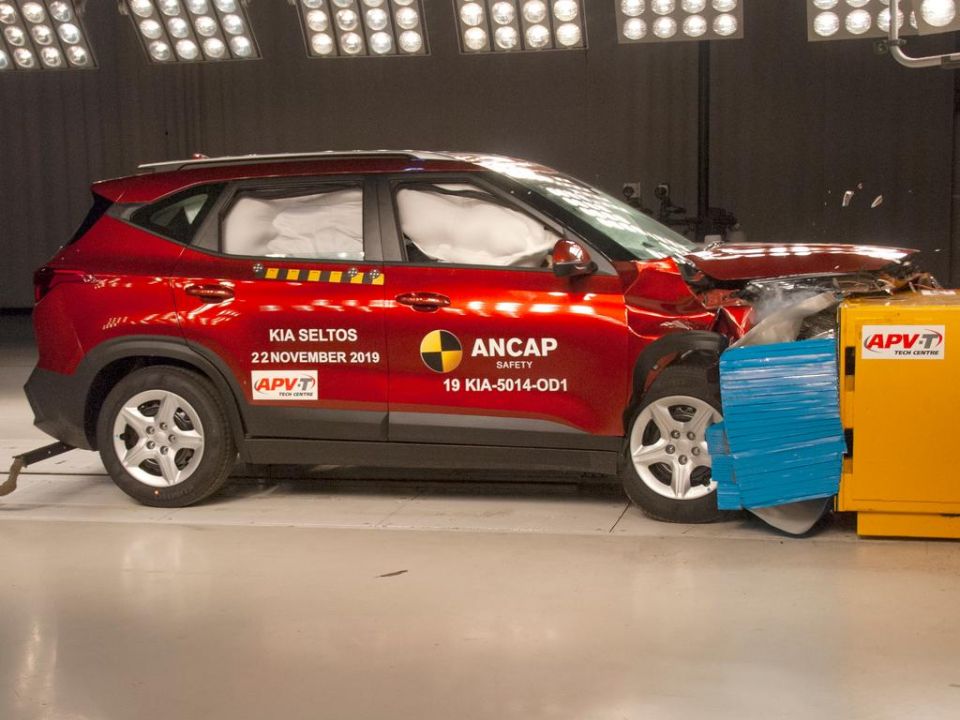
It received an adult occupant protection score of 85 per cent, child occupant protection score of 83 per cent, vulnerable road user protection score of 61 per cent, and a safety assist score of 70 per cent.
Standard safety features include:
Sport+ and GT-Line models receive AEB with cyclist avoidance and junction turning assist, as well as adaptive cruise control and lead-vehicle departure alert.
The Kia Seltos is covered by a seven-year, unlimited-kilometre warranty, with seven years of capped price service and up to eight years of roadside assist if you service the car at an authorised Kia dealer.

Logbook servicing for variants with the 2.0-litre engine is required every 12 months or 15,000km, while they’re required every 12 months or 10,000km for variants with the 1.6-litre turbo engine.
The first seven services in the 2.0-litre are capped at $290, $496, $354, $616, $326, $626 and $346. The first seven services in the 1.6-litre are capped at $309, $502, $375, $653, $348, $632 and $673.
The Kia Seltos is a very typical crossover that ticks a large number of boxes for me straight out of the box.
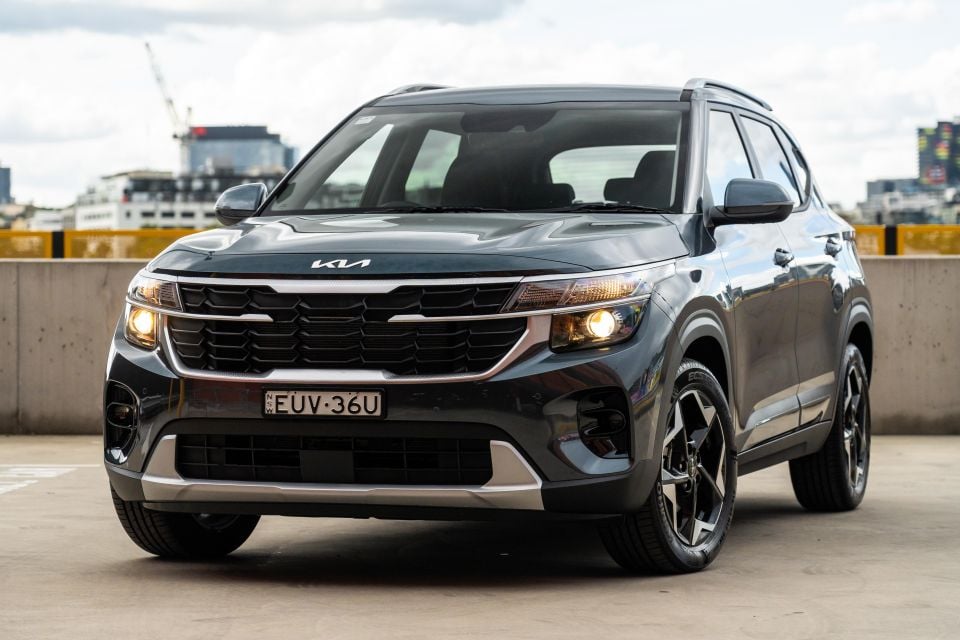
It provides a sought-after high-riding seating position that many crossover buyers are looking for, a modern-looking interior with a flashy curved housing for the digital instrument cluster and touchscreen infotainment system, as well as an effortless driving experience in and around the city.
However, things do start to come apart somewhat when you take the Seltos out on the open road. This is when the 2.0-litre naturally aspirated four-cylinder petrol engine starts to run out of puff. The CVT also ruins the ambience with its rev flares in order to maintain speed.
Thankfully you can get the Seltos Sport+ with the more powerful 1.6-litre turbo engine, but this costs an additional $3500 and also adds all-wheel drive.
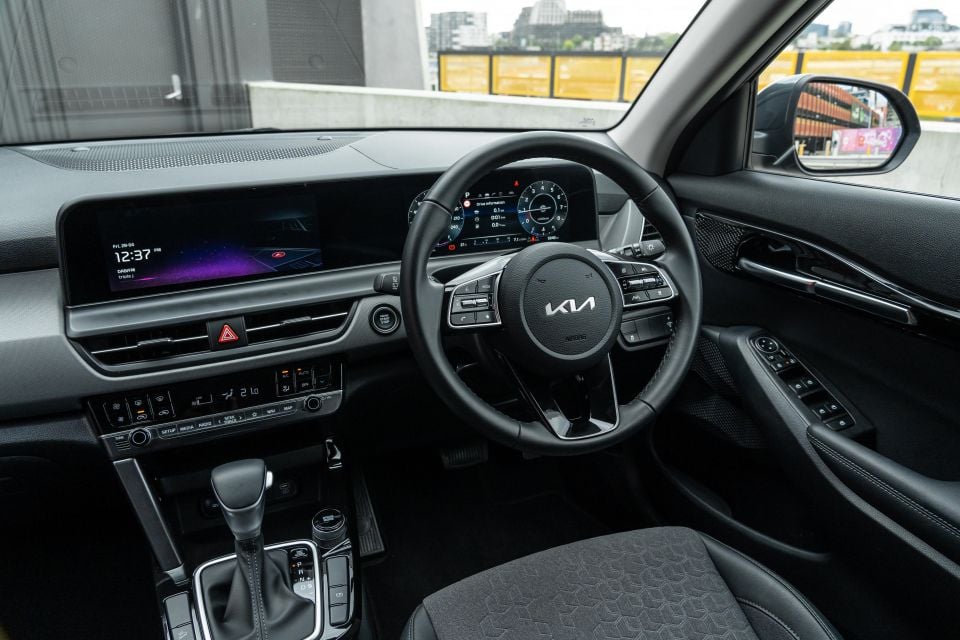
Another annoying gripe with the Seltos are the obnoxiously loud chimes for the Intelligent Speed Limit Assist. This would go off incorrectly at least once every time I drove the car, especially through school zones.
It’s hard to say the Seltos Sport+ is the sweet spot of the range as it misses out on so much equipment is reserved exclusively for the flagship GT-Line. These features include LED headlights, a power tailgate and rain-sensing window wipers, among others.
What is even more frustrating about this though is you need to spend well over $40,000 for the Seltos GT-Line to get these features, and over $45,000 if you want it with the more powerful 1.6-litre turbo engine.
I will say however, the Seltos Sport+ does come with the full suite of available safety equipment. If you don’t want all the bells and whistles this might be the best variant for you to you look at.
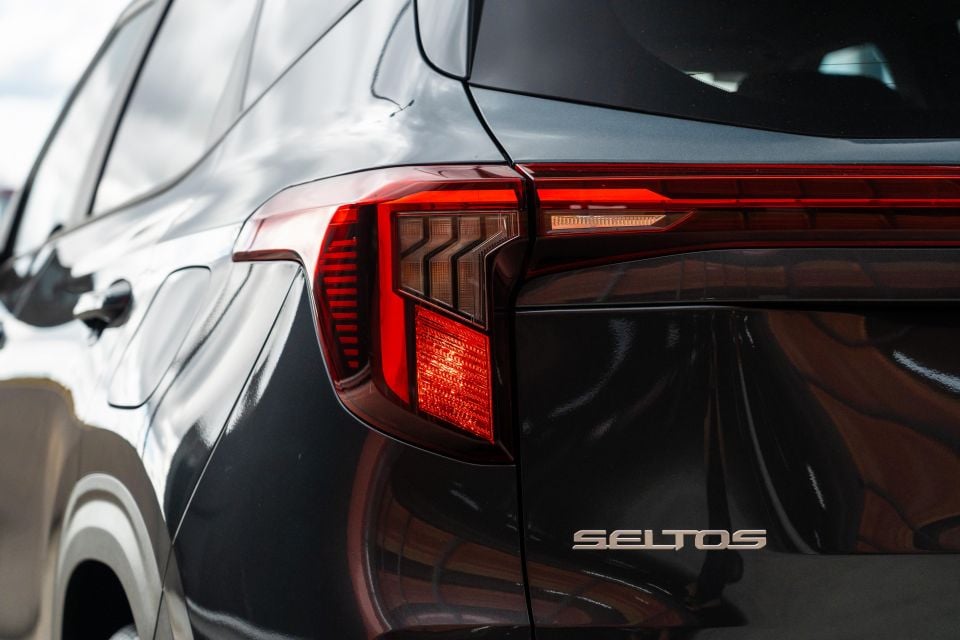
Click the images for the full gallery
BUY: Kia Seltos MORE: Everything Kia Seltos
Where expert car reviews meet expert car buying – CarExpert gives you trusted advice, personalised service and real savings on your next new car.
Jack Quick is an automotive journalist based in Melbourne. Jack studied journalism and photography at Deakin University in Burwood, and previously represented the university in dance nationally. In his spare time, he loves to pump Charli XCX and play a bit of Grand Theft Auto. He’s also the proud owner of a blue, manual 2020 Suzuki Jimny.


Damion Smy
14 Hours Ago


CarExpert.com.au
5 Days Ago


Damion Smy
5 Days Ago


Damion Smy
6 Days Ago


Josh Nevett
6 Days Ago


Max Davies
6 Days Ago